Home »
Winter driving can be a bit of a challenge in the UK, but can you imagine what it is like to have to start your van when the temperature is -30C and below? Diesel freezes and engine oil that is too thick to pump, vans are almost useless in the harsh wilderness of Scandinavia. That is why each year Finnish magazine Auto Teknikka Ja Kuljetus and a bunch of journalists from across Europe put a selection of vans to the sword in the ice and snow of the Arctic Van Test – two gruelling weeks of extreme evaluation into northern Finland to find out which van is best for snow and ice.
This year the test was split in two groups with medium-sized vans and larger 3.5-tonners. The mid-sized group of Ford Transit Custom, Mercedes-Benz Vito and Renault Trafic were joined by Fiat’s new Ducato, Vauxhall’s Movano and the Ford Transit at the start point in Mäntsälä, 60km north-east of Helsinki. Here the vehicles were prepared for their Arctic adventure and fitted with extreme winter tyres by Nokian, filled with Neste Oil and wired up with Driveco tracking systems. Then, loaded with test weights, the vans were weighed and measured to access the functionality of the cargo spaces.
Agility and reversing
Testing began by examining the turning circles of each vehicle as they commonly differ from the manufactures’ figures when driving on snowy ground with winter tyres. The Vauxhall Movano showed itself to have the biggest difference to manufacture’s figure, while the Ford Transit Custom and Fiat Ducato came closest. Unusually, the chart shows that turning circles also differ whether the vehicle is turning left or right.
See how the size of the vans compare in our Renault Trafic dimensions, Ford Transit dimensions, Ford Transit Custom dimensions and Fiat Ducato dimensions guides.
Next, reversing was tested using a coned test track to simulate a narrow street and a gateway. Maneuverability obviously plays a large part in reversing, but visibility plays a big part too, and each of the big vans were more than up to the task with wing mirrors featuring separate wide-angled sections. Ford’s is the largest but has the smallest regular mirrors, nevertheless it was enough to see the rear quarters of the vehicle and its tyres. Fiat’s Ducato has rather small wide-angle mirrors but thank to electric controls the view is improved and scored highly as a result. The Vauxhall’s mirrors gave decent view despite smallish wide-angle mirrors, but the 4.3m wheelbase made it difficult to reverse the Vauxhall through the tight corners of the narrow icy street.
In the mid-sized group, the Renault Trafic scored the best points in the reversing category, edging out the Ford Transit Custom by a small margin thanks to the Trafic’s passenger sun visor mirror that improves wide-angled visibility.
A city battle
The city driving portion of the Arctic Van Test was conducted in the port town of Oulu, 600km north of the capital and on the edge of the Arctic Circle. Here testers would evaluate the accessibility to cabin, gearing, engine torque and performance, as well as the handling characteristics of each vehicle on snow and ice.
Competition in the city was very close, especially in the mid-sized group. Ford and Mercedes were judged to have the best accessibility to the cabin, with the Mercedes gaining the most points for front and side visibility. Less relevant to the Arctic weather, but a necessary requirement for any van was the internal storage, and Renault was judged to have the best solutions – it also received praise for the torque developed by the turbo-twin engine. Mercedes triumphed in the noise testing, recording the lowest cabin noise-levels.
Of the larger vans, the Ford Transit was deemed to have the best driving position and also the best visibility, but the Vauxhall shone thanks to its multiple compartments and its dash layout.
The Movano’s engine also impressed, with the new twin-turbo engine leading the Vauxhall van to the top spot in the city tests, where it also impressed on gearing and grip when on snow and ice.
The battle of the best
It was an unusual result in the 1-tonne category of the 2015 Arctic Van Test. For the first time ever in the 29-year history of the test, there was a three-way tie among the medium vans. If anything, this demonstrates just how capable all vans now are, and that each is more than fit for purpose, even in the most extreme environments.
Fiat made a breakthrough in the big van group, but the competition was extremely close. As the winner, it scored only one point more than the Ford, which came in in second place ahead of the Vauxhall.
As the exceptionally even competition in the Arctic Test this year shows, it is not difficult to choose a good van in 2015 regardless of whether you are multi-dropping in Manchester, or off-roading on snow and ice in Oulu.
Improved safety
When there's snow and ice its generally a good idea to have a computer watching your back. Traction control and electronic stability control systems are generally a good idea in winter conditions and were tested on the ice track tests at Pudasjärvi airport. Ford’s Transit Custom received the best test points in the medium van group, while the new front-wheel-drive Mercedes Vito was almost as good. Fiat and Ford scored highest in the large van group, but testers did comment that the Ford system was very restrictive and awkward at times.
Master of possibilities
Ford Transit 350 2.2 TDCi 155
Test points 207
The Ford Transit is the most adaptable of any of the vehicles on test, with a choice of front-wheel-drive, rear-wheel-drive and four-wheel-drive, it also has the underpinnings for any working environment.
Testers liked the vans improved storage – the Transit has increased its loadspace capacity by 10% over the old model – and particularly liked the large side door. It coped well on the slippery winter roads, and with equipment like heated windscreens as standard, it’s an ideal specification for northern Finland. As with the smaller Transit Custom, testers also commented on the “button jungle”, and as a rear-wheel drive model, the loading height was particularly high.
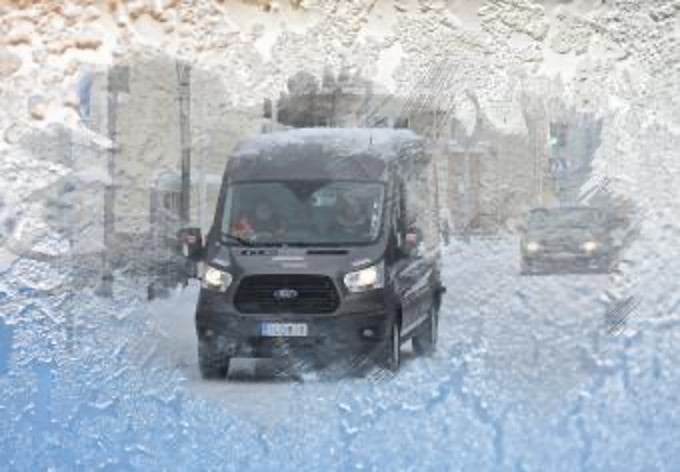
Based on a Master
Vauxhall Movano 2.3 CDTI 136 BiTurbo
Test points 202
Because of its French heritage – the Vauxhall is a shared product with the Renault Master – the Movano’s interior performs well for functionality with plenty of room for computers, papers, pens and other equipment. The Movano received a lot of praise for its new engine, but testers were less enamoured with the upright driving position and overly zealous electronic stability control, which cut in repeatedly and occasionally unnecessarily in the snow and ice conditions.
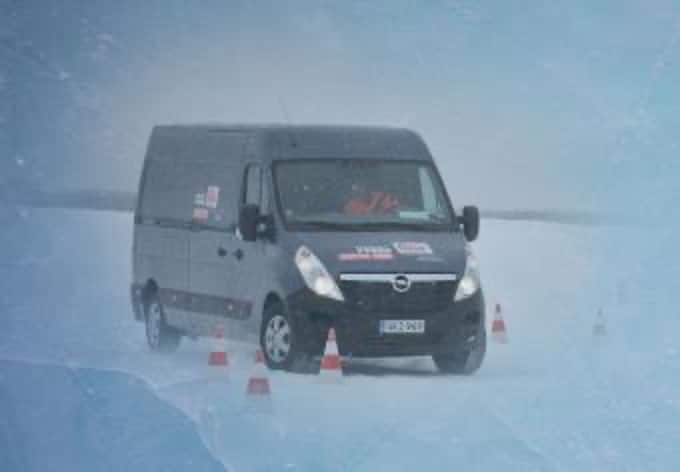
Winner on the open roads
Ford Transit Custom 310 2.2TDCi 125 L1H1
Test points 209
Ford Transit Custom turned out to be universally good in all types of driving. It ran smoothly and comfortably on the frozen roads and performed superbly in the cities as well. The shape of the rear loadspace was thought to be a bit weaker than the competitors have, while testers also commented that it takes a little time to get used to the dashboard’s “button jungle”. Long service intervals also appear to be one of Ford’s strengths, a boost for total cost of ownership and downtime.
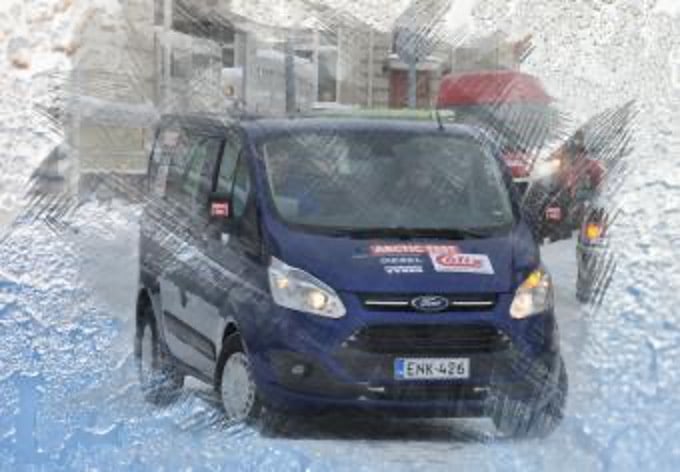
Winner in logistics
Renault Trafic dCi 120 TwinTurbo L2H1
Test points 209
Renault received universal praise for the level of equipment in its van, and has stolen a march on its competitors by including telephone and tablet holders in its new Trafic. Testers noted that the van is full of little details that are “wise” and superior to its competition. The blind spot mirror, attached to co-driver’s sun visor, is a good example of this. The rear loadspace also impressed, thanks largely to the van’s ability to take a 4m-long length, thanks to the load through hatch under the passenger seat.
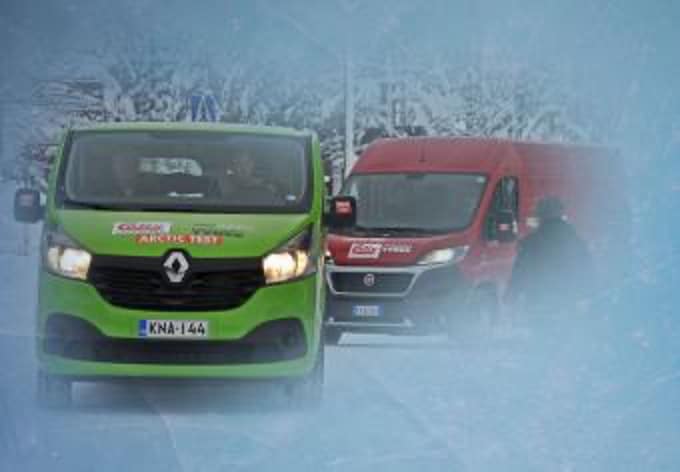
Winner in the City
Mercedes-Benz Vito 111CDI Medium
Test points 209
Mercedes-Benz Vito proved to be particularly competent in the city – partly due to having the easiest accessibility to the cabin of each of the vehicles in the test. However, the Vito’s mirrors were also judged to be the worst in the test group – which is a major negative when driving in cities. The Vito’s suspension was also evaluated as the best while driving on regular roads road, and was helped by the new front-wheel drive configuration now available in the range. Other negatives from the test included the engine’s awkwardness when driving at low rpm, and the narrowness of the cabin.
Read our Mercedes-Benz Vito review

Winner 2015
Fiat Ducato 3,5t 2.3 Multijet 150
Test points 208
The Ducato received large amounts of praise from its fuel economy and acceleration during the test. Its engine is among the best in the sector. Storage is also impressive, with plenty of room for small objects in the cab making the Ducato a real mobile office. Negatives noted by the testers included poor front visbility and limited space for passenger knees in cabin.
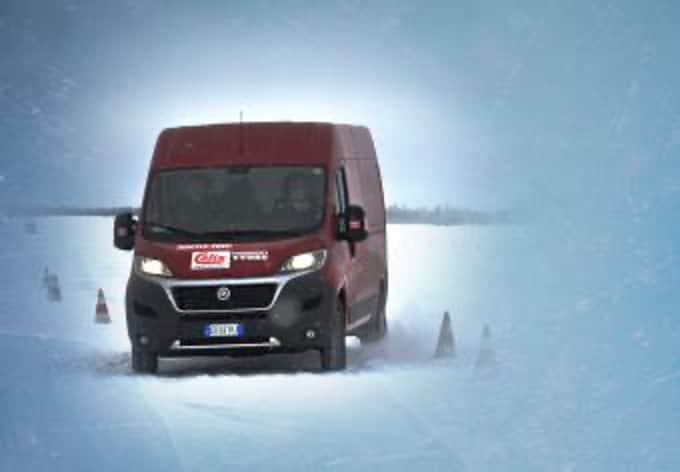
The Ducato cab is a real mobile office
Read the Fiat Ducato review here
In Denmark Cheap 4x4 vans, car-derived ones, are amongst the most popular vehicles on the road. It’s due to a weird quirk in their tax laws that allows vehicles with a certain stowage space to qualify as vans. The net result is that the Nissan Qashqai is the best-selling LCV in the country.
In the UK, similar but slightly less generous tax benefits exist for commercial vehicles including these car-derived vans. The taxable benefit for the unrestricted use of company vans is £3,150 and for someone paying 20% in income tax, that equates to just £630 per year in benefit in kind charges. If the company pays for fuel usage there is a further £594 of taxable benefit, which will lead to a £118.80 per annum charge, but the total cost for running a van as a personal company vehicle is still only £748.80 per year.
Rear our guide for van tax and pick-up truck tax in the advice section.
Not everyone wants to run one of these cheap 4x4 vans as their company car, but these car-derived vans are seen as a compromise, yet incredibly there is still little demand for vehicles of this type. As a result there are only a handful of models on the market that fall into the covert commercial vehicle category.
Mini has currently withdrawn production of the Mini Clubvan, and so too has Kia with its Sportage LCV. The Land Rover Freelander also fell by the wayside some months ago.
Mitsubishi currently offer the Shogun, although that is now showing its age, but have revitalised the Outlander range and include a new hybrid option. SsangYong has a rather tired looking Rexton model available as an LCV as well as the much younger, smarter and smaller Korando. Completing the market is the Dacia Duster Commercial, a new addition to the sector that the manufacturer hopes will experience as much success as its car model.
While minimising company car tax is largely the priority for buyers in this area of the market, the fact that these are functional commercial vehicles should not be overlooked. As each has broadly the same payload and volume capacity, we’ll focus on the three most current models from Mitsubishi, SsangYong and Dacia.
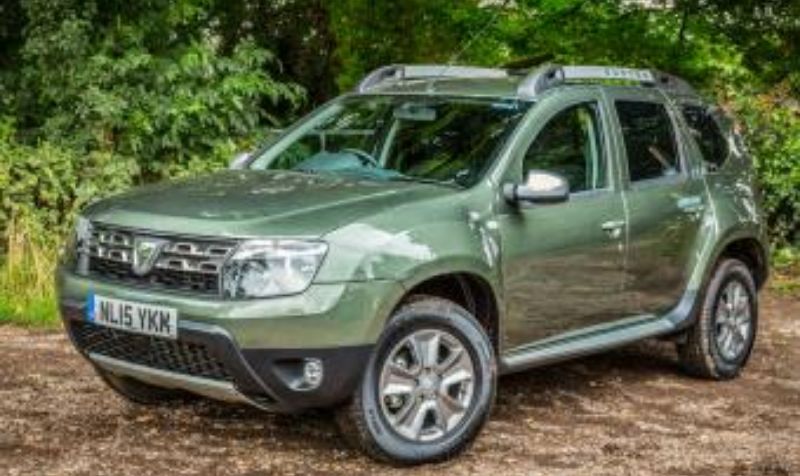
When Renault finished launching its Euro-6 truck range it must have had a few litres of the drab green paint they used to paint their launch models left over, and packed it off to their colleagues at the Dacia plant. Paintwork preferences aside, the colour scheme actually suits the rather utilitarian appearance of the little Dacia, which has a more functional “power tool” look than its two more refined rivals.
The functional theme is continued inside with a somewhat basic interior sporting rather cheap looking, round plastic air vents and acres of grey and black plastic. While that is not surprising for a van that costs just £9,595 in basic 4x2 guise and £12,545 as the top spec 4x4 tested here, we found the warning label on the back of the sun visor, which seemed to say do not skid the car but that it is alright to turn it over as long as you are wearing a seatbelt, particularly unusual.
Appearances might suggest the Dacia is a poor relative, but there are no fewer than three cupholders and two reasonably sized trays on the dash, which makes up for the small door pockets that are too narrow to be of much use. The seats too, often the first give away of a cheap interior, feel soft and plush but supportive enough after the firm cushions of the other two vehicles. The trip computer gives rather more basic information than the others but is easy to scroll through via a button on the end of the right stalk. Seeing that information, however, wasn’t quite so easy as the hooded dash cowling shaded the speedo and rev counter so effectively it made seeing them almost invisible when driving in daylight. Turning on the lights activated the instrument backlight which made them clearer. The Dacia gets an AUX input socket as well as a USB port, to allow music player connection and charging, both of which are easy to see and reach on the dash – unlike the radio display which is set quite low, making tuning on-the-fly harder.
Powered by a Renault group 1.5-litre dCi engine developing 107hp and 240Nm of torque from 1,750rpm, the Dacia feels willing and able and pulls well after a very brief pause which could be turbo lag or just the fuelling being a bit slow off the mark. Once spinning, the engine is smooth and responsive, being well matched to the gearbox. Gearing is lower than the Ssanyong making the Dacia happy to pull along in 6th at 40mph, turning at just 1,500rpm. The trade-off for this is more engine noise on the motorway where 70mph equates to 2,500rpm making it the noisiest vehicle in the test. Cruise control and a speed limiter are standard features on the Duster and are activated using a rocker switch on the centre console, after that speed can be adjusted on the steering wheel, and the cruise control symbol sensibly flashes to warn the driver if the set speed is being exceeded by too wide a margin.
Despite the price, the Duster is not as basic as you might think and there are a few touches that you wouldn’t usually find in a van. Quilted triangles on the door panels, and small collections of piano black trim show that Dacia have thought about trying to make this Laureate version of the Duster at least slightly appealing. But if your tired old estate car is your current mobile office, then the Duster Commercial might well be for you.
If you’re thinking about buying a used vehicle, the price should at least make you consider a new Duster as a three year warranty is better than anything you’d find in the second hand market, even if it does only cover you up to 60,000 miles.
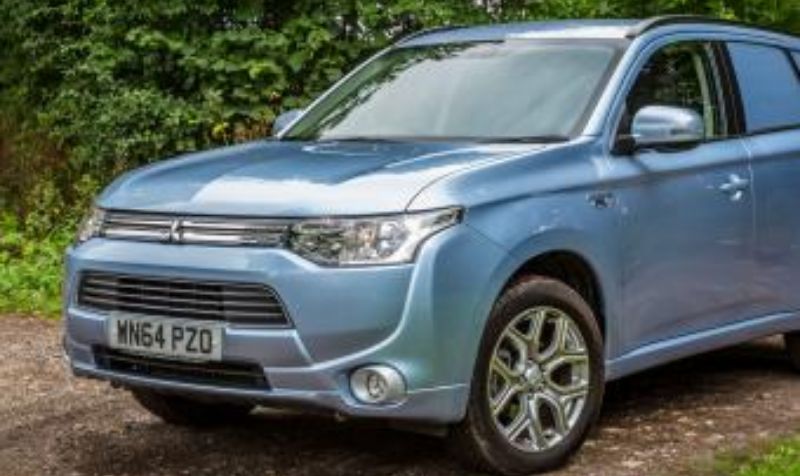
Technically, the PHEV (which stands for Plug-in Hybrid Electric Vehicle) is extremely sophisticated and you could easily just jump in, engage D and drive away without a second thought. While it might go against the grain to look through a manual, you really would benefit from putting aside an hour to have a read and understand the complex electronic power management systems of the Outlander.
At the heart of the PHEV is a relatively conventional 2-litre petrol engine producing 119hp and 190Nm and capable of directly driving the front wheels. Not particularly impressive for a vehicle with a kerb weight of 1,800kg, which incidentally means a gross payload of 500kg.
In fact it would probably be pretty sluggish were it not for the 300V traction battery waiting to join the fun, feeding 25kW motors front and rear. When these add 137Nm (front) and 195Nm (rear) to the equation, suddenly the Outlander gets quite lively.
A full charge takes five hours from a domestic 13amp supple which is enough to give you 32 miles of electric drive, but plugging in is not the only way to charge the battery. Electronic management allows the petrol engine to keep the batteries topped up when conditions allow and for extra power to be clawed back under braking.
To the business end, where the loadspace is usefully sized and covered in a rubber chequer-look mat with a low wall at the front to stop goods sliding into the seats. There is also a useful amount of space beneath the front that is ideal for keeping coats and other small items. This is useful as the provision of tie-down points isn’t particularly generous. A large central armrest hides a change tray above a handy sized cubby hole where you will also find a USB port and a 120W power socket.
The driving experience is all you’d expect from one of these cheap 4x4 vans whose basis is an SUV and towards the premium end of the spectrum with a £29,604 list price before any government incentives. Being a hybrid it is obviously a different process from its manual LCV counterparts, though the remote key fob and ‘power’ button to start and stop the power-plant are not unusual on many conventional vehicles. Once alive, there is a standard looking auto gearstick to select drive, neutral or reverse, a park button and a conventional handbrake.
The driving position is excellent, with comfortable and supportive seats that are fully adjustable, as is the steering column. The controls have a quality feel and are intelligently located, and the high-tech instrumentation is informative while staying just the right side of gimmicky. The interior has an upmarket feel, with leather steering wheel and trim together with silver carbon effect, and there’s plenty of storage. The sophisticated climate control offers the driver and passenger their own separate temperature settings with digital display.
The drive is almost silent when running on batteries and not much louder when the engine joins in. Only when accelerating hard or climbing very steep hills making the needle on the left hand power gauge fly round from charge/eco to the power part of the dial - does the engine get quite buzzy as it works hard to haul the bulky Mitsubishi around at speed. The size and weight don’t adversely affect the ride and handling, while the extra torque on tap to the rear wheels helps to balance the chassis if required. The brakes are excellent, being powerful and progressive and, by treating the regeneration in the same way as a truck’s engine brake, should last longer than normal. The cruise control and speed limiter were effective and easy to use, being managed by steering wheel controls, with a nice graphic of the set speed and a warning appearing if the set speed was exceeded.
The big question is who is the Mitsubishi Outlander PHEV 4Work for? First and foremost, its ability to run for a useful distance on pure electric drive will help those in crowded city centres to displace their emissions to where electricity is generated. It has reasonable off-road ability, but this isn’t something that’s traditionally needed in city centres, and the level of trim means you’d probably be reluctant to throw a few pigs or sheep in the back to go to market. Its theoretical appeal as a tow car is rather hindered by the modest 1,500kg towing limit, although it would happily pull that without breaking sweat.kind liability the Korando is the most car-like, and therefore liveable, 4x4 car-derived van you can get.
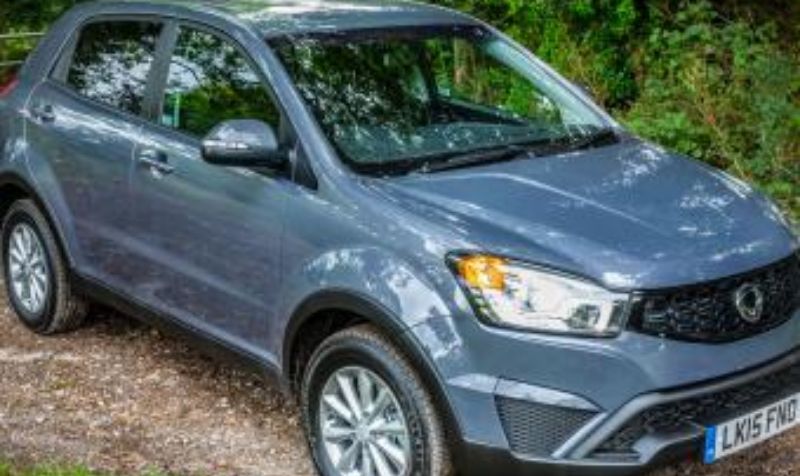
While some brands have had just minor dalliances with creating cheap 4x4 vans from cars, SsangYong have persevered with the sector and can now offer customers van versions of its Korando and the larger Rexton W cars, as well as the Korando Sports pick-up truck.
With a heritage in off-roaders dating back to 1954, SsangYong’s portfolio of 4x4s are thankfully much more modern. The Korean manufacturer is one of the only adopters of a coil sprung rear axle for its Korando Sports pick-up truck, suggesting that they have an understanding of passenger comfort at the very least.
That is certainly the case when seated in the Korando’s smart interior. It’s stylish for a “van”, with wood effect and silver trim throughout the interior that also feels of a good quality. The Dacia is a little barren when it comes to frills, but specifications on the Korando are comparable to the Mitusbishi Outlander with a good audio system, cruise control, Bluetooth and leather trim, but there is only so far the £13,965 budget will stretch. There’s no DAB digital radio, and automatic headlights, but these are minor inconveniences as the Korando has the most functional interior for a working vehicle. There is plenty of storage particularly within the short central armrest which hides a deep cubby hole, ideal for hiding valuables. Smaller bits and pieces can also find a home in the handful of trays around the Korando.
Power comes from a four-cylinder 149hp 2-litre turbodiesel engine, that returns a smooth, quiet and very-much car-like experience. While some may still think of Ssangyong as a budget brand, the refinement and quality are firmly up there with the bigger names and are streets ahead of the Dacia. The engine is very responsive pulls comfortably above 1,500rpm. Motorway cruising speeds are the quieter than the Dacia Duster and Mitsubishi Outlander with the only real noise coming from tyres as the engine works at just 2,000rpm.
Changes between gears are light and smooth, but the positioning and long stick make the Korando feel a little utilitarian. That, however, is not necessarily a bad thing as it reminds you just how capable it is and as a 4x4 it is immensely talented. The low slung sump guard will prevent you from getting into bigger ruts and holes but the Korando can still effortlessly tackles off-road terrain with its four-wheel-drive system and differential lock.
The Ssanyong is higher geared than the Dacia, and the gear shift indicator only asks for sixth gear above 50mph. A slight gradient at that speed will also prompt a request for a shift back to fifth despite the engine feeling quite content pulling at the 1,500rpm showing at this speed.
The controls for heating and audio are both easy to use, but the indicator and wiper control stalks stick up awkwardly while the small cruise control knob located at around 5 o’clock on the steering wheel takes time to get used to. The steering wheel is only adjustable for height, while the seat has no height adjustment yet the Korando is still a comfortable vehicle, with a good seating position and ample rear travel.
Given that these cheap 4x4 vans are purchased largely to maximise tax benefits thanks to their flat rate, the purchase price is irrelevant in this equation. However, given that even with the government grant the plug-in Mitsubishi is nearly twice the price of SsangYong and considerably more than double the Dacia, it is hard to justify spending more money to save a small amount of money.
The Outlander may be the only plug-in hybrid option for this type of LCV, but its expensive drivetrain adds little to the equation while its specification and working ability are matched by its rivals.
Dacia is likely to continue to shake up the market with their Duster and by adding an LCV to the range it may widen the appeal further still. It ticks all the boxes required of a van, and demonstrated some impressive fuel economy figures in the process. Where it falls down in our view is in its desirability and appearance. The interior is drab and a little dated and the budget price and feel are underlined by the higher levels of engine and road noise allowed to penetrate the cab.
While it’s far from perfect, the SsangYong is on balance the best all round vehicle of the three and poses the best value. Had the Mitsubishi Outlander been a diesel vehicle it may have been a closer contest, but the strong 2-litre engine, smart exterior and interior appearance as well as its surprising off-road abilities makes the Korando our winner.
If you need cheap 4x4 vans and require some occasional off-roading the Korando neatly balances economy, capacity and value. If you’re looking for a loophole to cut down your benefit in kind liability the Korando is the most car-like, and therefore liveable, 4x4 car-derived van you can get.